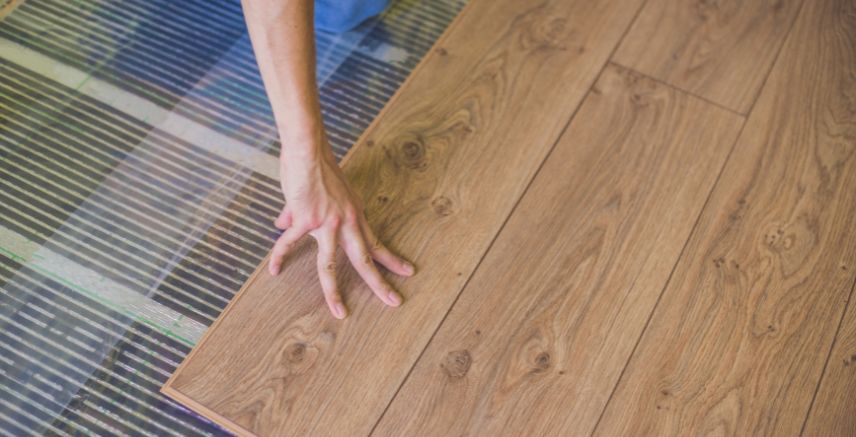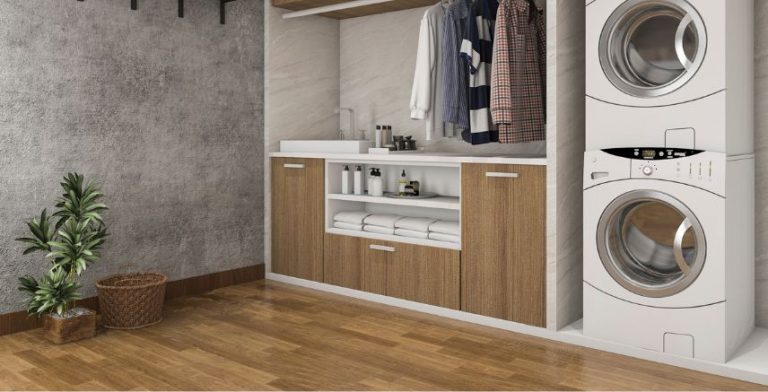Smooth Sailing
There are plenty of reasons to install laminate flooring in your room. It’s durable, boasts a long lifespan, looks great and is easy to clean. But while laminate flooring is often an excellent choice in a property, many DIY-ers make common mistakes when installing laminate flooring that can lead to long-term problems.
In this blog post, we’ll explore some of the most common mistakes with laminate flooring that DIY installers make and how to avoid them or fix a flooring installation that’s gone wrong. Let’s get into it!
Laying Laminate Flooring in Damp Spaces
Laminate flooring is great when used in spaces such as bedrooms or living spaces. Unfortunately, though, it’s not great when it comes to dampness. In damp spaces, laminate flooring can warp, discolor or bubble. That means you should avoid installing laminate flooring in areas that experience significant moisture, including kitchens, bathrooms and laundry rooms.
If you insist on installing laminate floors in those rooms, you’ll need to install some form of moisture protection to protect the flooring from water damage.
Not Letting the Floor Acclimate
Laminate flooring must sit within the room where it will be installed for around 48 hours before installation. This is known as acclimating or acclimatizing. Allowing the floor to acclimate before installation avoids the potential warping and buckling of the wood while it gets used to the humidity levels in your home.
Check the instructions on your laminate flooring before letting it acclimate. The general rule is 48 hours, but some varieties require 72.
Failing to Seal Laminate Flooring
Even if you install your laminate flooring in spaces that aren’t exposed to lots of moisture, any room is still at risk of spillages and other ways through which water or liquids might enter the floor.
Failing to seal your laminate flooring once installed leaves it vulnerable to damage down the line. To ensure your flooring lasts for as long as possible, use a sealant such as flue or silicone caulk to close any gaps. If spillages occur during installation, wipe them up as soon as possible.
Forgetting to Use an Underlay
While the laminate flooring itself is important, many non-expert installers forget about the subfloor, too. Firstly, you’ll need to prepare the subfloor by removing any high spots with a sander and filling low spots with a floor-leveling compound. Otherwise, the planks can start to separate due to big humps or dips on the floor.
In many cases, you’ll also need to install an underlay before you go ahead with installing your laminate flooring. Some laminate floors have a waterproof membrane already integrated into the bottom of the planks themselves, but others don’t.
When they don’t, you’ll need to add an underlying moisture barrier, which will significantly reduce the likelihood of your laminate flooring being damaged by dampness.
Laying Laminate Flooring Too Close to the Wall
When installing any type of wooden flooring, not just laminate, you must leave an adequate gap between the wall and the flooring. This is because, over time, wood can expand and contract with changes in temperature and humidity. If you install the laminate flooring too close to the wall, the flooring will push against the wall and lift over time.
This can cause joints to unlock, ruining your flooring and requiring urgent repair. The good news is that you don’t have to do anything too complicated to prevent this process from happening. Just cut your flooring between ¼ and ½ inch away from the wall, and this will be sufficient.
Leaving Too Big of a Gap Between the Flooring and the Wall
We know we’ve just said you shouldn’t install the flooring too close to the wall, but unfortunately, the same goes for the opposite. Don’t panic—there’s a happy medium somewhere!
If you leave an inch or more between the flooring and the wall, this unsightly gap will not only ruin the look of your flooring but also leave the underneath prone to spillages and moisture. Over time, moisture will accumulate under the flooring and cause problems for your laminate floor. Instead, leave no more than half an inch between the laminate floor and the wall for optimal results.
Flooring Finesse
The good news is that with expert installation and proper floor maintenance, your laminate flooring can last for years and look great for its entire lifespan. If you avoid making these common mistakes with laminate flooring, you’ll enjoy all the benefits associated with this popular type of flooring and save money on maintenance costs.

